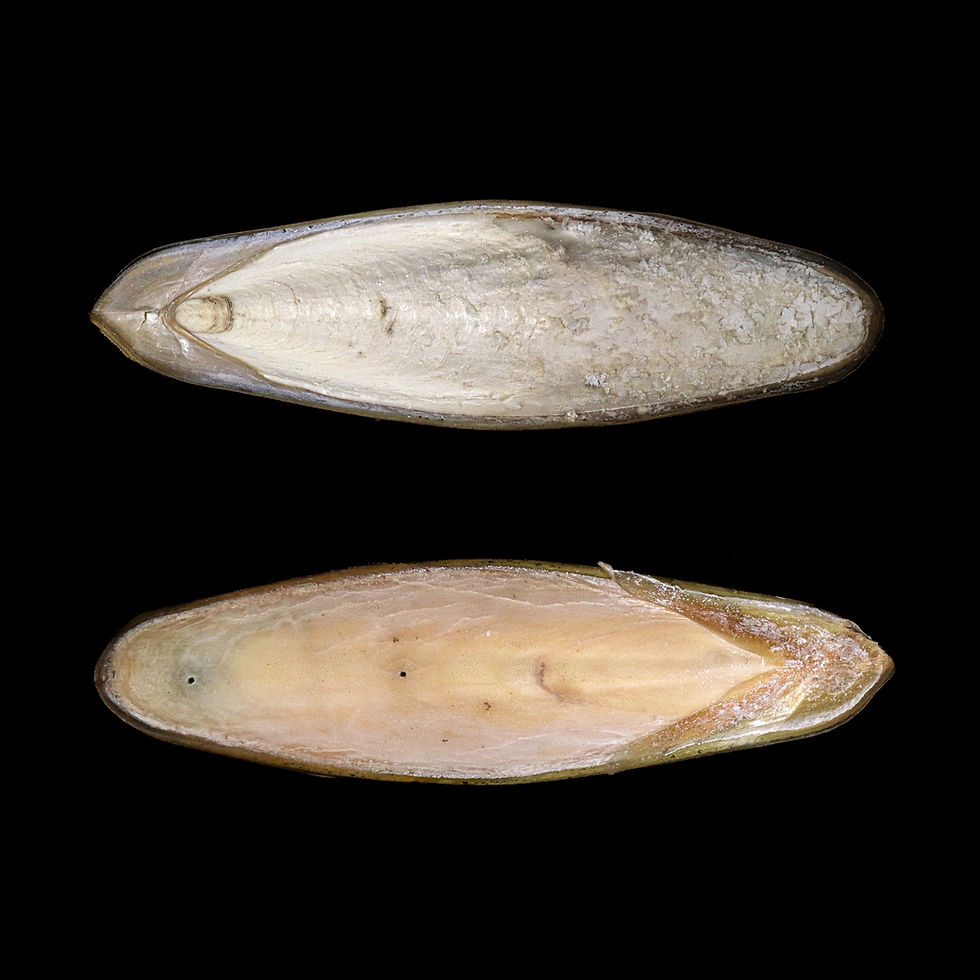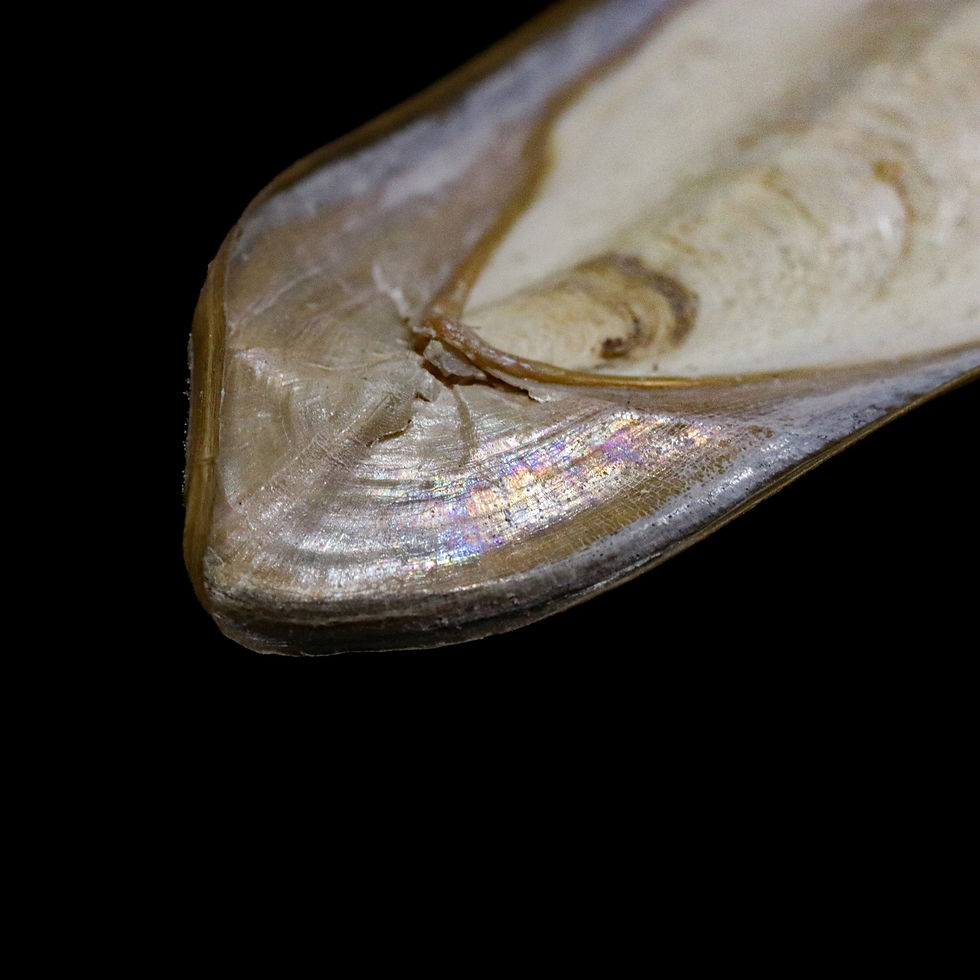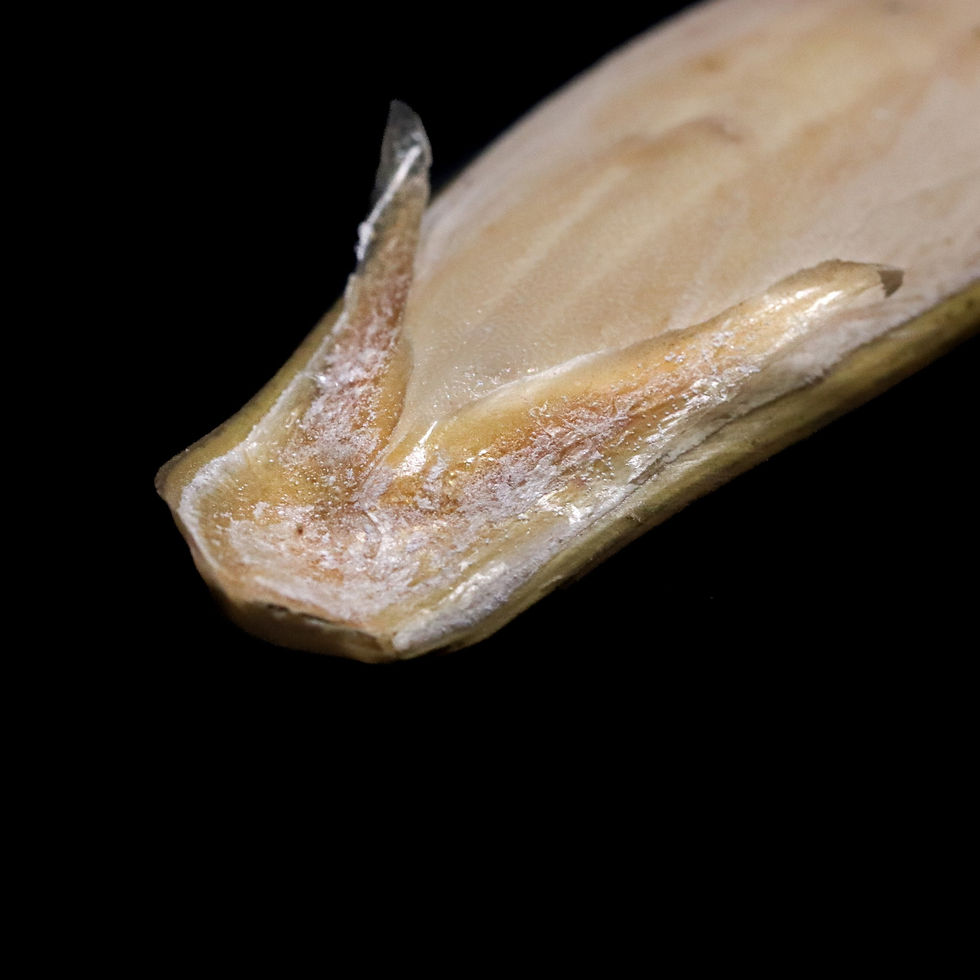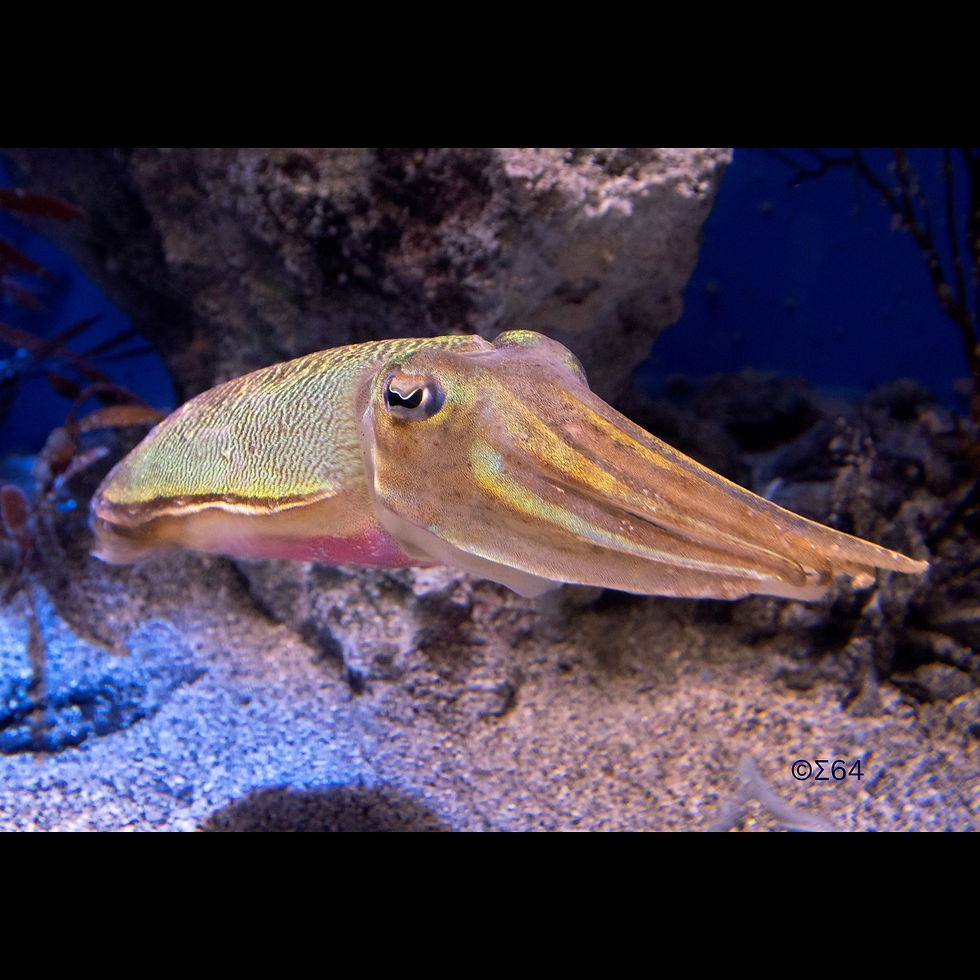Specimen Showcase|The Marine Color-Changing Magician
- Hong Kong Biodiversity Museum

- Mar 13
- 4 min read
There is a large colorful forest under the sea. One might think of a reef with corals of different colors. Today , however, we introduce the dazzling 𝘈𝘤𝘢𝘯𝘵𝘩𝘰𝘴𝘦𝘱𝘪𝘰𝘯 𝘭𝘺𝘤𝘪𝘥𝘢𝘴 (Gray, 1849), commonly known as the kisslip cuttlefish, dressed in a colorful dreamy attire!
A. lycidas is mainly found in the tropical and subtropical western Pacific Ocean, from Japan to Myanmar, in the Philippines and Indonesia. It is a benthic species, living near the lowest levels of the sea, and is commonly found in shallow coastal waters of the tropics, typically at depths ranging from 15 to 100 meters.

There are noticeable polymorphism (differences) between male and female A. lycidas.The average size of adult males is typically around 10 to 15 centimeters in mantle length while female of A. lycidas are slightly larger than males, with an average mantle length of around 12 to 18 centimeters. The third pair of right arms in males develops into a “copulatory organ.” This structure is used to transfer sperm to females during copulation. During the mating season, males attract females through displaying special display dance, specific postures and colors and, when successful, mate with them. Subsequently, during the mating process, the male grasps the female and inserts a reddish penis into the female’s mantle cavity. Fertilization usually occurs in the mantle cavity. Shortly after fertilization, the cuttlefish lays amber-colored eggs that resemble those of a chicken.


A. lycidas is a large species of cuttlefish, with an average mantle size of 38 centimeters and weighing nearly 5 kilograms. The many lip-like patterns on its body surface are its most eye-catching feature, hence its name. Its oval-shaped but relatively wide and slightly flattened body provides many benefits for protection, support, and buoyancy. The cuttlefish's internal shell, known as the cuttlebone, has many hollow chambers that help the cuttlefish adjust its buoyancy. Another distinguishing feature to note is that they have eight arms and two tentacles, with 5-6 rows of suckers on the tips of the tentacles. After the tentacles shoot out and capture the prey, the arms of the cuttlefish have cylindrical muscular structures that allow them to rapidly extend, and grab hold of the prey. Then, they pull the prey closer and secure it with the suckers present on their eight arms before feeding on it.

As one of the most « intelligent » invertebrates, cuttlefish have rather large brains. Their brain-to-body weight ratio is lower than that of mammals and birds, but higher than that of fish and reptiles. Their number of nerve cells is also quite large. For example, the brain of an adult giant octopus has as many as 500 million nerve cells. Therefore, they use their clever camouflage abilities to outsmart predators and compensate for the vulnerability of their external soft bodies. However, did you know that the master of color-changing is color-blind? The scene they see visually is only a gray-scale color distribution but they can perceive colors using their skin, which contains a photosensitive protein that allows them to respond directly to color without involving the brain. How amazing! If you observe a cuttlefish while diving and follow it, you can see that its colors, textures, and postures change to mimic its surroundings. They are the masters of underwater color-changing magic, displaying vibrant colors such as reddish-brown, green, purple, zebra stripes, or spots. On the contrary, the ventral side of A. lycidas is light-colored to white. The light to white color of their ventral side helps them camouflage in the underwater environment because they inhabit areas near the sea surface where there is intense sunlight. Therefore, when viewed from deeper parts of the ocean towards shallower areas, the lighter color of their ventral side reduces their chance of being detected. The diversity of disruptive patterns and colors they exhibit is due to the presence of 11 color components, including 6 dark and 5 light ones. The combination of these different colors creates their striking appearance, which is controlled by pigment cells (chromatophores) and neuromuscular control of their skin patterns. They can change body color and blend into the environment by shrinking the chromatophores on the body. At the same time, because they blend seamlessly with their environment, their prey never notice their arrival.
If their camouflage technique doesn’t prevent the approach of a predator or of a strong rival, A. lycidas has a last card to play with the release of a black fluid from its internal ink sac. The cells in the ink gland are black. When these cells age and rupture, the ink stored in the ink sac cavity will be released through the ink gland. This ink, containing pigments and other chemicals, forms a murky ink cloud, which disrupts the predator’s vision and provides the cuttlefish an opportunity to escape. Unfortunately, A. lycidas has not escaped our plates yet and its over exploitation in recent years causes a problem in the populations of this extraordinary species.
Come and visit the Hong Kong Biodiversity Museum where you can witness and appreciate this species up close without the need to dive underwater!
Text: Gemini




Comments